
What to Plant With Cabbage: Good and Bad Companion Plants
Growing cabbage in a mixed crop has several advantages: in addition to defending against diseases and pests, the soil also benefits. Cabbage plants are heavy feeders and extract many nutrients from the soil. In order not to deplete the soil, you should vary your bed between high-, medium- and low-yielding plants. In this article, you can find out which plants go well next to cabbage and which are better planted in a different spot. There are also tips on succession cropping and crop rotation with cabbage.
This Article Contains:
- Planting Cabbage: Location & Soil
- What Can You Plant Next to Cabbage?
- These Plants Fit Next to Cabbage
- These Plants Do Not Go Well With Cabbage
- Table: Good & Bad Companion Plants for Cabbage
- Succession Planting: Pre- And Post-crops for Cabbage
- Crop Rotation With Cabbage
- Planting Plan for Your Vegetable Patch: Mixed Cultivation With Cabbage
- Frequently Asked Questions About Cabbage in Mixed Cultivation
Quick Overview
Cabbage in a Mixed Crop: Suitable Companion Plants
- Good companion plants: eggplant, beans, peas, potatoes, carrots, chard, peppers, postelein, lettuce, celery, tomatoes
- Bad companion plants: strawberries, garlic, other cruciferous plants, leeks, onions
Succession Planting and Crop Rotation With Cabbage
- Succession planting: Suitable previous and subsequent crops are spinach, lamb's lettuce, peas, spinach, celery, radishes
- Crop Rotation: Observe a cultivation period of 4 years
Planting Cabbage: Location & Soil
Cabbages belong to the cruciferous family (Brassicaceae). This includes many cultivated plants such as cauliflower, white or red cabbage, broccoli, Brussels sprouts and kohlrabi. But pak choi, Chinese cabbage and mustard also belong to the Brassicaceae. Popular green manure plants such as mustard are also part of this family. Other frequently cultivated crops in this plant family are radishes and daikon, which form the radish genus (Raphanus).
Cabbage plants are mostly heavy feeders. Radishes and Kohlrabi are an exception. These two cabbages are medium feeders. The soil should be rich in humus and nutrients and well aerated. Cabbage therefore thrives best on loamy or clayey soils. Soils that are too sandy, on the other hand, are usually too poor in nutrients, so in this case you should improve your garden soil with compost. Choose a sunny to semi-shady spot in the bed. An even supply of water is also important for cabbage plants, as they do not cope well with dryness or waterlogging. You can read more about Planting Cabbage and Tips on Growing Cabbage in this article.
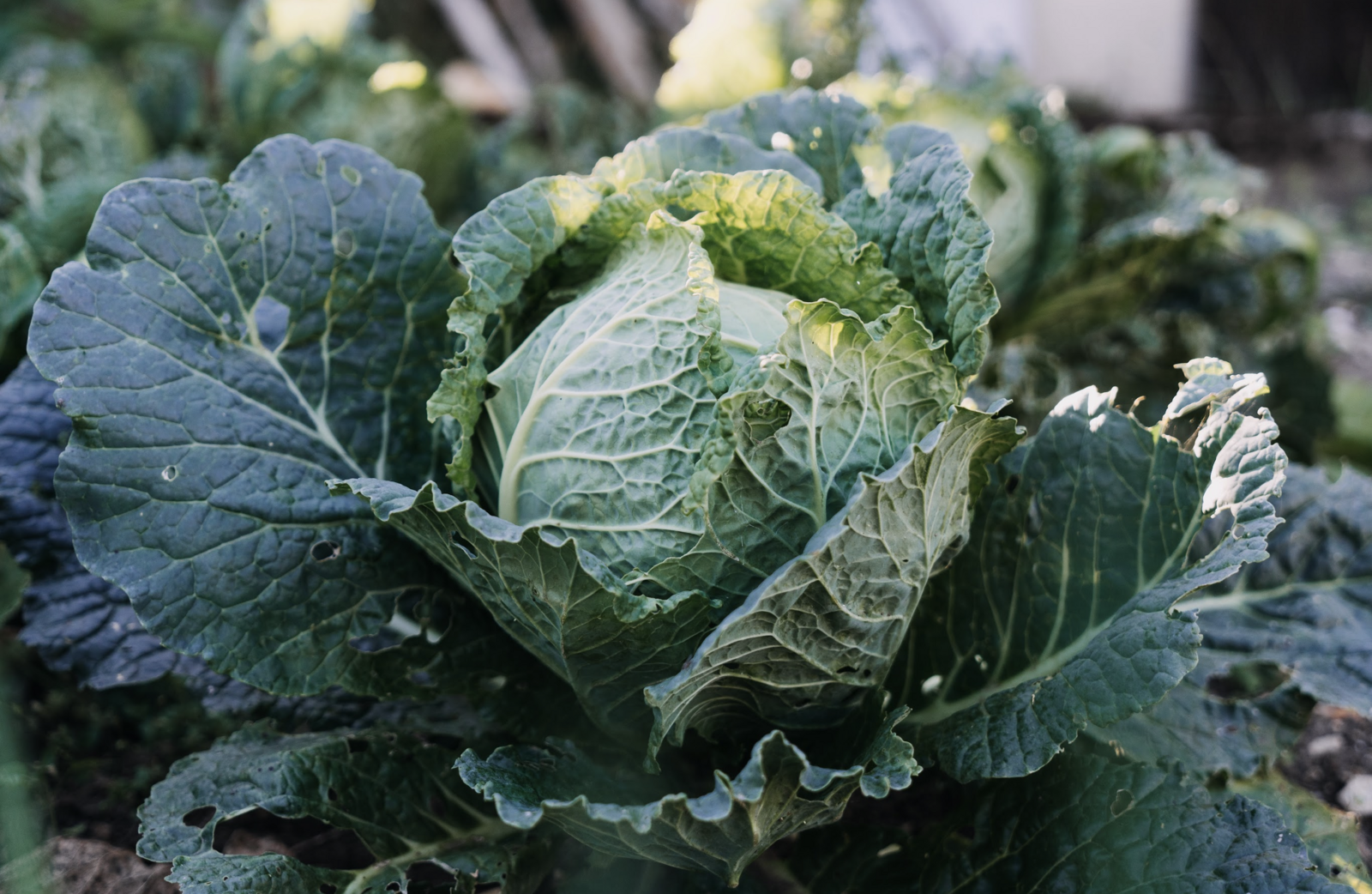
What Can You Plant Next to Cabbage?
Coals usually grow very strongly above ground and take up a lot of space in the bed. You should therefore choose suitable intercropping partners to make the best use of the space. However, the growth form varies greatly depending on the type of cabbage: headed and leafy cabbages such as Brussels Sprouts, Pointed Cabbage, kale and co. tend to grow above ground and form spreading leaves/heads. However, there are also plants from the Brassicaceae family, such as Radishes or Daikon, which form tubers in the soil.

Want to Know about Companion Plants for Cabbage?
With our bed planner, you can easily plan a colourful mixed crop. Good and bad neighbours are displayed directly and you get tips on succession planting and crop rotation!
Plan Your Bed NowThese Plants Fit Next to Cabbage
- Soil-covering crops go particularly well with tall-growing cabbage varieties. This protects the soil from wind and rain and thus from erosion and silting. Ground-covering plants that are good companions for cabbage: Spinach, lettuce and postelein. Swiss chard is also a leafy vegetable that goes well next to cabbage plants.
- Root vegetables such as carrots and potatoes are also good companions for cabbage. If you plant carrots or potatoes together with cabbage, you will make optimum use of the space in the bed both above and below ground. Root vegetables also loosen up the soil, ensure better aeration and thus reduce the risk of waterlogging.
- Potatoes and cabbage generally go very well together. Cabbage plants such as savoy cabbage, pointed cabbage and broccoli only really start to grow when most potato varieties have already been harvested. However, cauliflower is an exception among cabbage plants. You should therefore not plant potatoes next to cauliflower!
- In addition to potatoes, other nightshade plants (Solanaceae) such as eggplants, tomatoes and peppers are also good companions for cabbage plants. Tomatoes keep the cabbage white butterfly away from your cabbage plants. Make sure you provide sufficient nutrients with this combination, as both plant companions are heavy feeders. Prepare your bed with a good portion of compost.
- Nasturtium goes well next to cabbage plants. It protects cabbage from infestation by cabbage white butterflies. Cabbage white butterflies prefer to lay their eggs on nasturtiums.
- Legumes such as peas and beans are particularly good companions for cabbage in the bed. They fix atmospheric nitrogen in the soil and thus make nutrients available to plants. The hungry cabbage benefits from this.
- Another good companion is celery and cabbage. Celery keeps the cabbage white butterfly away with its aromatic substances! The intense smell of the celery plant masks that of the cabbage and the butterflies can no longer find where they lay their eggs.
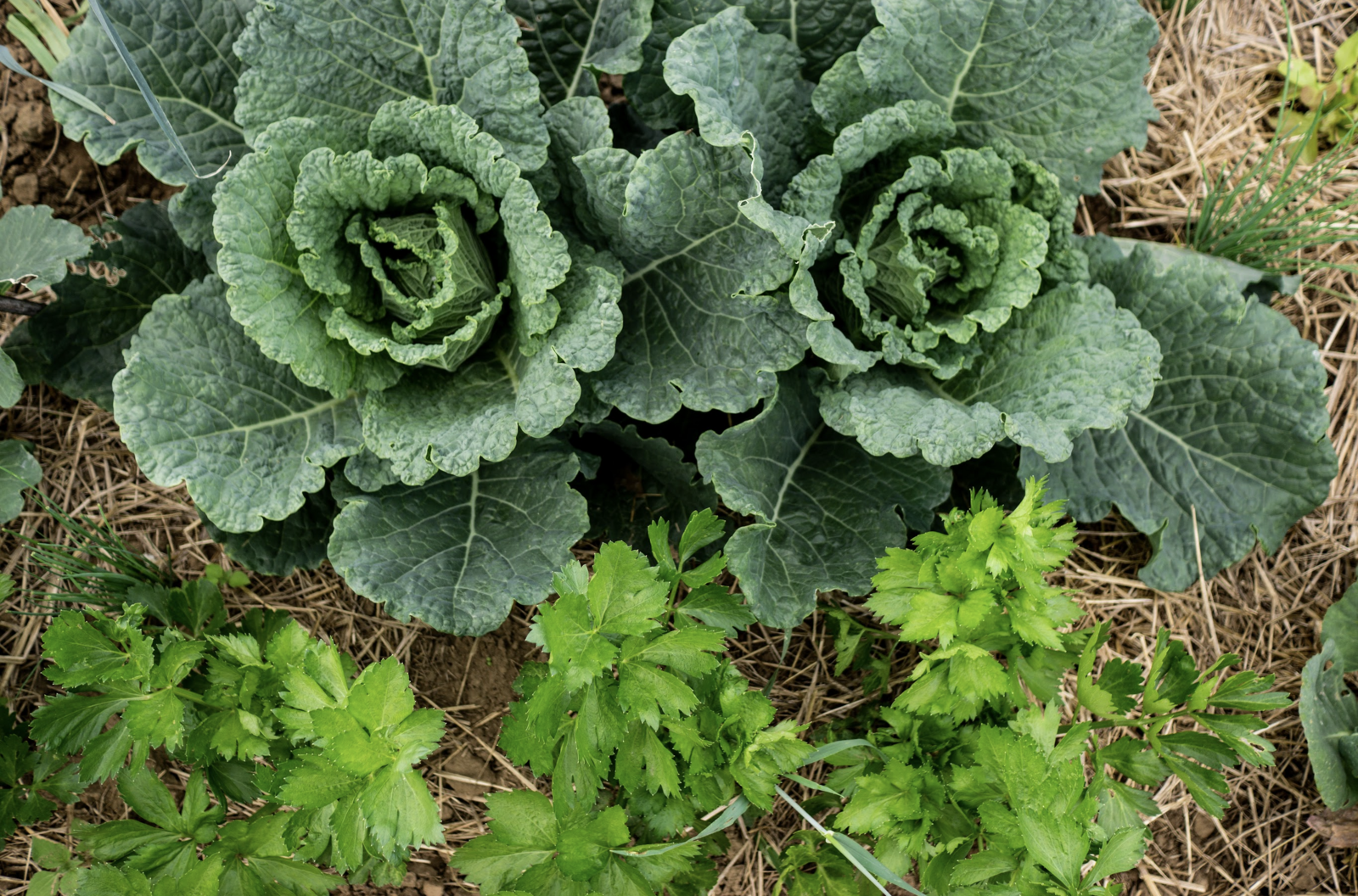
These Plants Do Not Go Well With Cabbage
- Like most plants, cabbage does not like to grow next to other plants of the same species. Therefore, do not plant other cruciferous plants next to your cabbage plants. If one plant family dominates your beds, it will attract specific diseases and pests.
- Plantingstrawberries and cabbage together is also not a good idea. This encourages fungal diseases and pest infestations!
- Garlic, leeks and onions do not go well next to cabbage plants. Cabbage inhibits their growth!
Table: Good & Bad Companion Plants for Cabbage
| Good Companion Plants | Bad Companion Plants | |
|---|---|---|
| aubergine | peas | cruciferous vegetables |
| beans | peppers | garlic |
| carrots | potatoes | leeks |
| celery | postelein | onions |
| chard | spinach | strawberries |
| lettuce | tomatoes | |
| nasturtium |
Succession Planting: Pre- And Post-crops for Cabbage
As cabbage is a heavy feeder, medium to light feeders are suitable as a subsequent or previous crop. In addition to vegetable plants, you can also sow Green Manure. This enriches the soil with nutrients and maintains soil fertility over the long term. You should not choose mustard as a green manure, as this is part of the same plant family. However, there are many other green manure plants such as phacelia or buckwheat.
As most cabbages have a relatively long growing season, planning the Succession Planting is somewhat more difficult. However, there are crops with a short growing period that are suitable as a pre-crop or post-crop for cabbage plants: spinach, lamb's lettuce, peas and celery. Radishes are also suitable as a pre-crop for other cabbage plants. However, they are not ideal as they are also part of the Brassicaceae family. If you already have problems with specific diseases or pests for cabbage, you should therefore use other secondary crops.
As cabbages can also be grown well in winter, they are a good main crop for the winter. They are therefore ideal as a catch crop for low or medium-yielding crops that were on your beds in the summer months.
Crop Rotation With Cabbage
To avoid leaching the soil or attracting specific pests, you should take a break from growing on a bed (or part of a bed) for 4 years.
Planting Plan for Your Vegetable Patch: Mixed Cultivation With Cabbage
Pre-cultivation in Spring From February to April
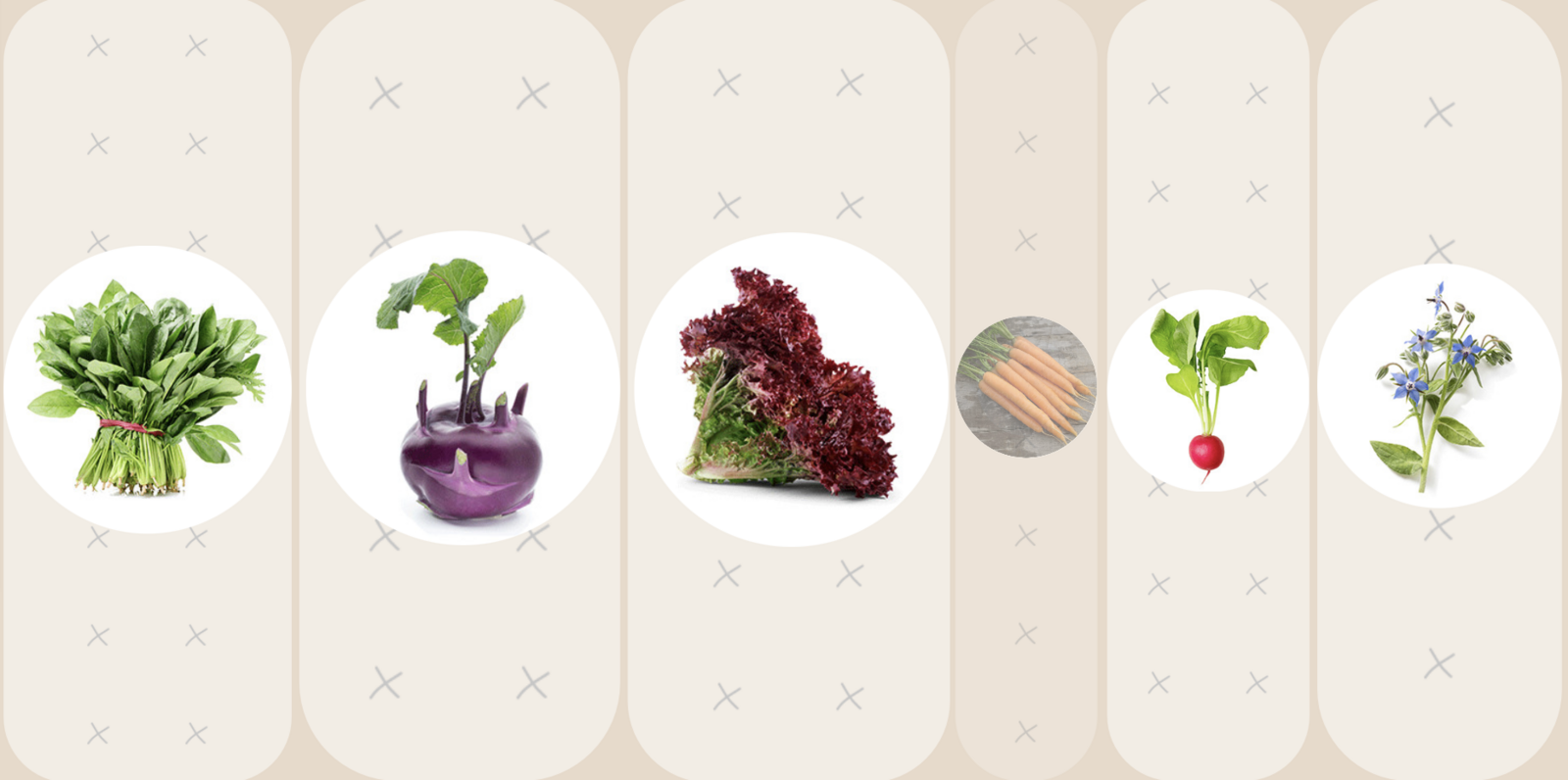
Before the cabbage plants are planted in your bed in summer, there is still enough time to sow pre-crops. You can sow kohlrabi, e.g.' Azurstar', early in the year (January) and plant it in your bed from the end of February. You can also sow other cold-tolerant crops such as spinach, borage, radishes or lettuce. A suitable lettuce variety for such early sowing would be the robust variety 'Lollo Rosso'. You can also sow carrots in mid-March. The early variety 'Amsterdam 2', for example, is ideal for this.
Example of a Vegetable Patch - May to September
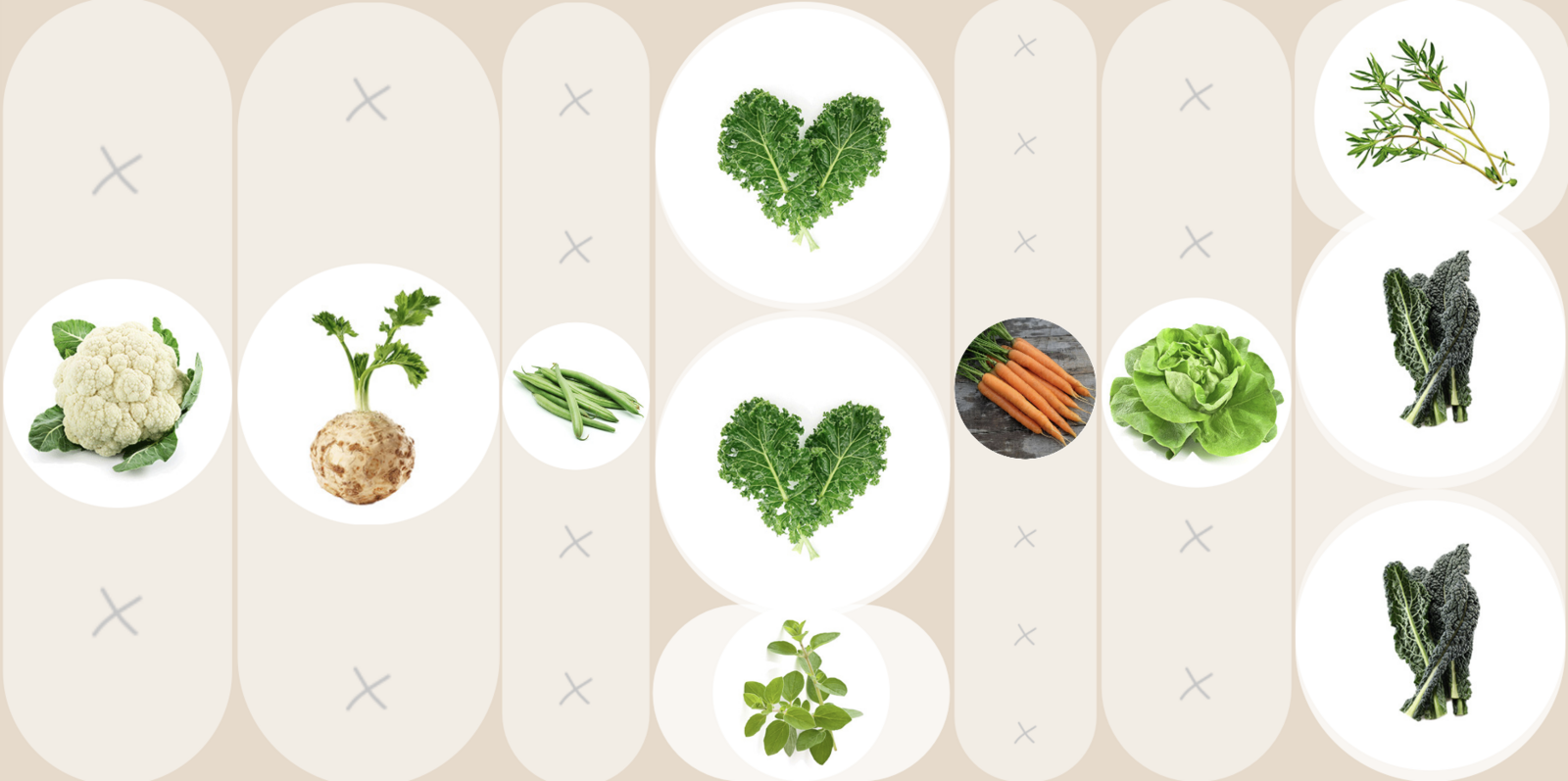
The pre-grown young plants can then be planted from mid-May after the Ice Saints. Cauliflower, celery, palm kale and kale can now be planted outdoors. Salads and herbs such as oregano and savory can also be planted. It is best to use young plants here too so that you can harvest more quickly. Sow the beans directly into the bed. The carrots will grow and thrive and will be ready to harvest in a few weeks (from around mid-July).
Vegetable Patch From October to December - Post-Crops

Most cabbages have a relatively long growing season. This is why kale and palm kale remain in the bed well into the winter. The same applies to celery plants, which also grow slowly and remain in the field until November. However, some crops have already been harvested and you can still sow a few more crops in mid-September: rocket, lamb's lettuce, spinach and radishes. You can also sow cress next to the cabbage plants. One hardy variety is 'barbara cress'.
Good luck with growing your own cabbage and if you have any questions, problems or comments, please write to us at [email protected].
Would you like to receive helpful gardening tips all year round and plan your own beds optimally? Then register here or download the Fryd app for Android or iOS.
Fryd - your digital bed planner

Marie
Marie is an agronomist. She is particularly interested in the sustainable and organic cultivation of vegetables and other plants. In her own garden, she gained experience and likes to try things out to learn from nature. She is particularly interested in the values and principles of permaculture, in order to contribute not only to the well-being of nature, but also to the well-being of people and future generations.
Learn MoreCurrent Topics in the Community
I'm currently planning my garden beds for this year. I would appreciate any recommendations for tomatoes that are suitable for outdoor cultivation. I'm also interested in beefsteak tomatoes that should work well outdoors. Thank you in advance!
Show 3 answers
Liked 4 times
Good morning. Please forgive me if this isn't the right place for this, but I'm looking for someone who would like to start a gardening project with me. I lack the knowledge and experience, but I have a suitable plot of land. 2000 square meters of orchard near Ingolstadt. The property is fenced in and I often took my dog there. (Dogs can run free.) What do I want? The ultimate goal is self-sufficiency. Starting small but complete... i.e., planting, harvesting, preserving. I would consider it a win-win situation if we help and support each other. So if you know anyone... Thank you very much.
Show 2 answers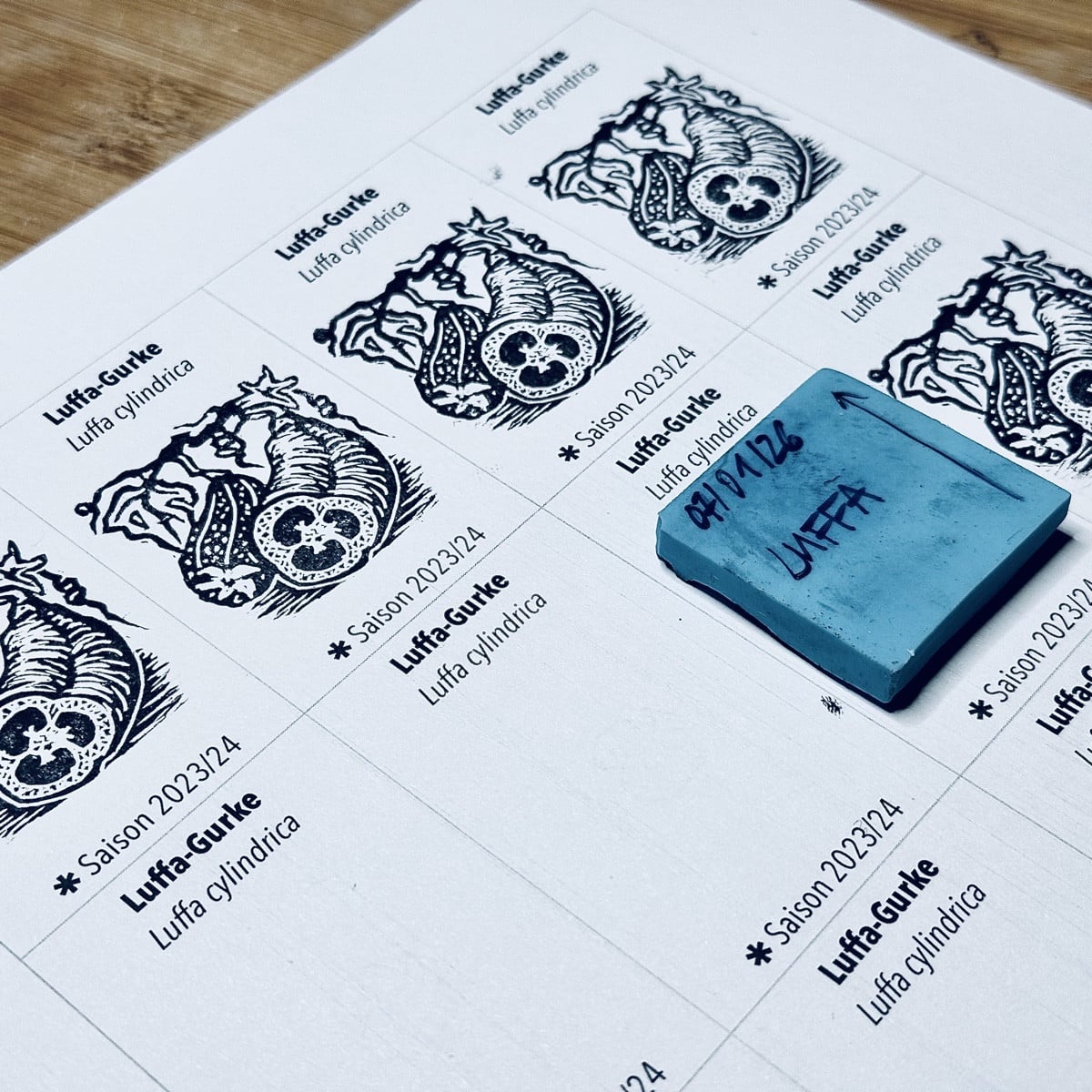
Liked 10 times
The art campaign continues! In other news, who wants to swap loofah seeds? In the most beautiful seed packets in the whole world 😁 #SwapGarden
Popular Articles

Overwintering Parsley: How to Do It Successfully

How to Grow Lettuce in Winter: Varieties, Sowing, Harvesting

Growing Sage Plant: Tips for Sowing and Harvesting

What Herbs Can Be Planted Together?

Create & Design a Permaculture Garden

Overwintering Plants: Tubs, Pots and Raised Beds

Pruning, Fertilizing & Propagating Currants: Care Tips

Pruning Raspberries: How to Do It

Vegetable Garden With Greenhouse: How to Use Greenhouse Effect

Winterizing Beds and the Garden: How to Do It
FAQ
Which plants are good companion plants for cabbage in a mixed crop?
Good companions for cabbage include eggplant, beans, peas, potatoes, carrots, chard, peppers, lettuce, celery and tomatoes.
Which plants should not be planted next to cabbage?
Bad companions for cabbage are strawberries, garlic, other cruciferous plants, leeks and onions.
What should I bear in mind when rotating crops with cabbage?
It is recommended to take a cultivation break of 4 years so as not to leach the soil and to avoid specific pests. Spinach and peas are favorable pre-crops for cabbage.
How do I grow cabbage successfully in a mixed crop?
In order to achieve a successful mixed crop with cabbage, care should be taken to combine plants with different nutrient requirements and growth forms in order to make optimum use of the soil.